It looks like you're using an Ad Blocker.
Please white-list or disable AboveTopSecret.com in your ad-blocking tool.
Thank you.
Some features of ATS will be disabled while you continue to use an ad-blocker.
18
share:

PREVENTING THE FOURTH REICH
PREFACE
PROLOGUE: Is there a 'Nazi' lurking inside of YOU?
CHAPTER 1: Human Vs. Nature (Intro to Self-Deception & Brutality)
I've never much gathered that many folks spend much time educating themselves on basic 'humanalities'. 'Humanalities' is the word we'll use as a categorical term in reference to (introspective) science fields of human cognition & behavior (evolutionary inherited traits, psychology, social psychology, cognitive biases, etc). I suppose this isn't much of a surprise, as mankind is an infernal beast, although it's for this very reason I contend that we should. I argue that most of our problems, on the social level are the result of this kind of norm. I argue against it, instead offering as a major solution to the woes of humanity that the teaching of this kind of stuff, like Critical THinking in general, should be have major emphasis especially during adolescence.
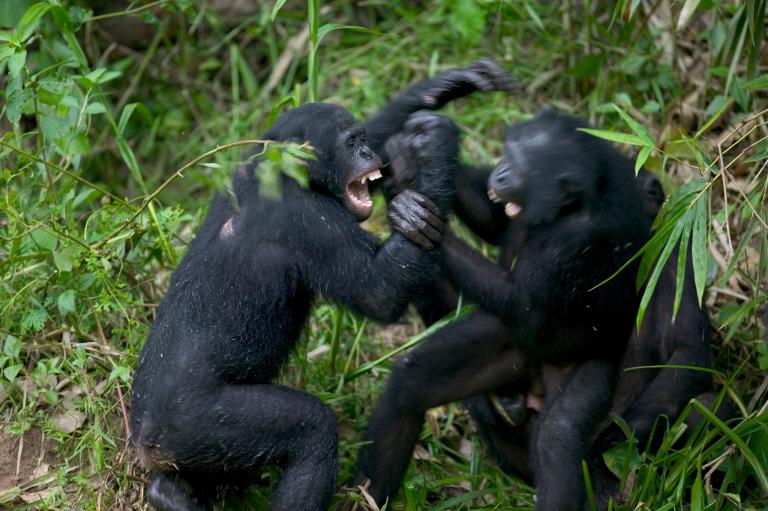
Diving right in, a recent study showed how humans are 'animals', or rather it sort of debunked the old saying that only humans kill for sport (while at the same time showing human sadism to be an inherited trait):
How Human Violence Stacks Up Against Other Killer Animals
Humans get some of their knack for killing each other from the primate family tree, a new study says...
The research was based on the theory of phylogenetics and the study of the evolutionary relationships and shared traits between related species. The closer the studied species were, the more similar their murder rates were, concluded the study. Scientists analyzed more than one thousand previous studies that referred to over one thousand different mammal species. They particularly investigated causes of death. Then, the researchers compared the number of fatalities related to murder. A superorder of species known as Euarchontogilires has a murder rate of about eleven killings per 1,000 deaths. Rodents, hares, and early humans are part of this order. The Euarchonta group, which includes primates, flying lemurs, and humans have a rate of twenty-three killings per 1,000 deaths. For great apes, the rate is eighteen killings per 1,000 death.
That's an easy extreme example of humans and one of our evolutionary inherited traits. Here is a far more ubiquitous, and likewise more complex example: Self-Deception.
The Evolutionary Basis of Self-Deception ]
Despite its widespread occurrence, self-deception is classified as a form of psychopathology. Because self-deception regularly generates false beliefs, this figures prominently among the motivations for designating self-deception as a form of pathology or malfunction. I argue that this is a poor reason to classify self-deception as a form of psychopathology. From an evolutionary, Darwinian point of view, we are not justified in concluding that self-deception is pathological. In particular, we are not justified in concluding that the cognitive processes of self-deceivers are malfunctioning. Despite a long philosophical tradition to the contrary, I conclude that self-deception may be indicative of a normally functioning, evolved human mind.
We should not be so quick as to conclude that everyday forms of false belief generation, such as self-deception, are pathological. I claim that self-deception may be characteristic of a normally functioning, evolved human mind. As such, self-deception should be understood as an adaptive cognitive strategy grounded in the evolutionary, biological, and psychological development of normal human beings. While some cases of self-deception are obviously maladaptive (much like some false beliefs are maladaptive on some scale), self-deception can be viewed as an adaptive strategy with empirical support found in evolutionary biology and neurophysiology. In the end, I want to suggest that a little self-deception goes a long way, evolutionarily speaking.
Natural selection could care less whether or not we have true beliefs – what matters is that we get our bodies out of harm’s way, find food, and reproduce (and even then, if we die off, Mother Nature probably won’t even notice). We can accomplish these tasks without a set of beliefs that’s entirely true. In fact, we could probably do better with some false beliefs. As Mele (2005) states, “On many topics, a bit of self-overestimation is harmless and even useful. One potential effect of your overestimating your congeniality is your being more outgoing than you would otherwise be, making more friends, and having a better time socially.”
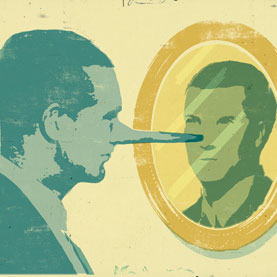
Concerning the innate 'nature' of humans, we're already off to a rough and irrational start. We still have yet a ways to go, where this material is important for the next main section, but I will try to keep it short.
On paper, as we shall see, we humans as a species on earth really are 'insane' (especially considering the fact that the masses don't try to study and grow from the kinds of information herein). In focusing on human tendencies to self-delude & collectively-delude, it could even be argued that our 'insanity' defines our 'sanity' in terms of basis of reality. The prevalence of various atrocities across the different cultures on the planet could single-handedly drive this point. We naturally are opposed to such, as well, and yet with social group dynamics brought into the mix things can get murky (i.e. Hypocrisy). Perceptions within and without such groups in one atrocious matter can yet be found in other forms within any given group. The people that 'argue' about such, for and against 'whatever', often find the others to be 'insane'... yet even in their arguing you see each side commit the same recurring biased & fallacious 'logic crimes'.

Endless opportunities for case studies in human irrationality & rationalization / justification erupt from just the subject of atrocities and shrewd behavior, while there are endless others 'plaguing' essentially every other sphere of 'humanality'. "Does this dress make me look fat", where the woman is expecting her beloved man to lie to her comes to mind. As fun as that discussion could be, it's not quite the rigth fit for the larger topic herein.
More suitable for this topic would be other everyday items of the human experience, in particular Petty Power.
...CONTINUED...
edit on 28-10-2016 by IgnoranceIsntBlisss because: (no reason given)
...CONTINUED...
Who has had a decent amount of years in various workplaces that has NOT experienced the 'ahole boss / manager'? It's hard for me to imagine it, as some of the worse examples I can recall were from females too. Given that reality, this little sphere is loaded with danger when factoring in 'all male' work environments (i.e. construction).

Yet the bigger concern is actually the pecking order scheme itself, and how it so often seems everyone even when voicing out against it still prove to support it, in practice. I know I've seen the types who embrace in their attempts to become The Manager, no surprise there, but I've also seen people become it once they get promoted. I suppose degrees of being an 'a-hole' are inherently 'needed' to keep a team focused, etc. And yet there are extreme examples, quite commonly I'll add, and I've seen people rant and curse how one of their former managers was an extreme case study to only go on to do the exact same behaviors.

Rankism AKA Power Tripping can happen in sort of workplace, school, etc.
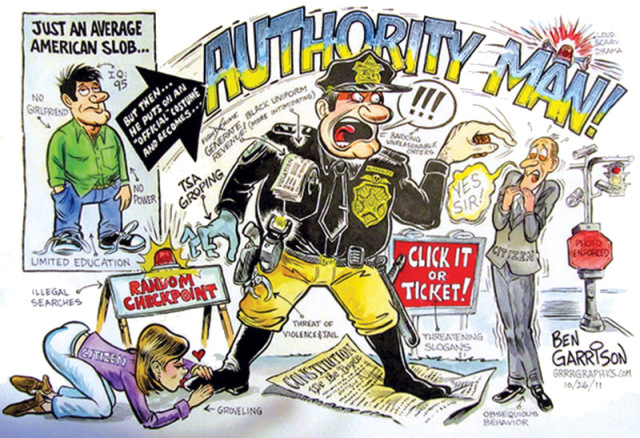
And then there are the work descriptions that tend to attract sadist personality types...
Police brutality, or rather police shootings sure are the buzz kill feed these days. And no doubt that profession draws out some crazies, yet no doubt that NOT all of them are crazies. THen again there is the issue of what happens when you put people into groups and into certain situations (i.e. the Stanford Prison Experiment).
...CONTINUED...
Petty Tyranny
Petty tyranny (or petty authority or petty power) is authority exercised by a leader, usually one unchosen by the led, in a relatively limited or an intimate environment, such as that exercised by a fellow peer of a social group. It is a pejorative term, that carries with it a sense of authority that was gained, or is used, in an unfair or capricious manner. Ashforth discussed potentially destructive sides of leadership and identified petty tyrants, i.e. leaders who exercise a tyrannical style of management, resulting in a climate of fear in the workplace.
Who has had a decent amount of years in various workplaces that has NOT experienced the 'ahole boss / manager'? It's hard for me to imagine it, as some of the worse examples I can recall were from females too. Given that reality, this little sphere is loaded with danger when factoring in 'all male' work environments (i.e. construction).

Pecking Order
Pecking order or peck order is the colloquial term for a hierarchical system of social organisation. ...The original use of pecking order referred to the expression of dominance in chickens. Dominance in chickens is asserted by various behaviours, including pecking, which was used by Schjelderup-Ebbe as a measure of dominance and leadership order. In his 1924 German-language article, he noted that "defense and aggression in the hen is accomplished with the beak". This emphasis on pecking led many subsequent studies on fowl behaviour to use it as a primary observation, however, it has been noted that roosters tend to leap and use their claws in conflicts.
The term dominance hierarchy is often used for this type of social organisation in other animals. Pecking order is a basic concept in social stratification and social hierarchy that has its counterparts in other animal species, including humans, although the term "pecking order" is often used synonymously.
Yet the bigger concern is actually the pecking order scheme itself, and how it so often seems everyone even when voicing out against it still prove to support it, in practice. I know I've seen the types who embrace in their attempts to become The Manager, no surprise there, but I've also seen people become it once they get promoted. I suppose degrees of being an 'a-hole' are inherently 'needed' to keep a team focused, etc. And yet there are extreme examples, quite commonly I'll add, and I've seen people rant and curse how one of their former managers was an extreme case study to only go on to do the exact same behaviors.
Kiss Up Kick Down
Kiss up kick down (or kiss up, kick down) is a neologism used to describe the situation where middle level employees in an organization are polite and flattering to superiors but abusive to subordinates. It is believed to have originated in the US, with the first documented use having occurred in 1993. The concept can be applied to any social interaction where one person believes they have power over another person or believes that another person has power over them.
en.wikipedia.org...
The workplace bully is often expert at knowing how to work the system. They can spout all the current management buzzwords about supportive management but basically use it as a cover. By keeping their abusive behavior hidden, any charges made by individuals about his or her bullying will always come down to your word against the bully's. They may have a kiss up kick down personality, wherein they are always highly cooperative, respectful, and caring when talking to upper management but the opposite when it comes to their relationship with those whom they supervise. Bullies tend to ingratiate themselves to their bosses while intimidating subordinates. The bully may be socially popular with others in management, including those who will determine the bully's fate. Often, a workplace bully will have mastered kiss up kick down tactics that hide their abusive side from superiors who review their performance.

Rankism
Rankism is "abusive, discriminatory, or exploitative behavior towards people because of their rank in a particular hierarchy". Rank-based abuse underlies many other phenomena such as bullying, racism, hazing, ageism, sexism, and homophobia.
Rankism can take many forms, including:
*exploiting one's position within a hierarchy to secure unwarranted advantages and benefits (e.g. massive corporate bonuses);
*abusing a position of power (e.g., abusive parent or priest, corrupt CEO, bully boss, prisoner abuse);
*using rank as a shield to get away with insulting or humiliating others with impunity;
*using rank to maintain a position of power long after it can be justified;
*exporting the rank achieved in one sphere of activity to claim superior value as a person;
*exploiting rank that is illegitimately acquired or held (as in situations resting on specious distinctions of social rank, such as racism, sexism, or classism).
Rankism AKA Power Tripping can happen in sort of workplace, school, etc.

And then there are the work descriptions that tend to attract sadist personality types...
Police brutality, or rather police shootings sure are the buzz kill feed these days. And no doubt that profession draws out some crazies, yet no doubt that NOT all of them are crazies. THen again there is the issue of what happens when you put people into groups and into certain situations (i.e. the Stanford Prison Experiment).
[url=http://www.cnn.com/2015/04/22/us/california-horseback-beating-settlement/]Man gets huge settlement after televised police beating]
Earlier this month, deputies in San Bernardino County tried to serve a warrant on Francis Pusok related to an identity theft investigation. But Pusok fled the police, first leading them on a car chase. He ditched the car and fled on foot. Then, according to the sherrif's office, he stole a horse and rode off on rugged and steep dirt trails.
What happened next was troubling to many, including San Bernardino County Sheriff John McMahon. A video shot from a KNBC helicopter hovering above the arrest captured the scene. KNBC reported that Pusok appeared to be kicked 17 times, punched dozens of times and hit by a baton as well.
...CONTINUED...
edit on 28-10-2016 by IgnoranceIsntBlisss because: (no reason given)
...CONTINUED...
Believe it or not, that was a white guy. At the time I got into a big unexpected heated argument with my neighbor about that incident. I wasn't even sure of the exact criminality of the perp (it turns out he basically was running for being scared initially), it was the way they handled him that was my concern. My neighbor, not even having seen it, instantly supported the police actions (his wife works in law enforcement, and it is dangerous). I suppose the guy did deserve some serious consequences, but that level of atrocity was way beyond the mark. I killed our 'debate' with "okay, so he deserved 2 months in the hospital and then a year in jail afterwards, or ruptured testicles, 6 weeks in the hospital and 6 months in prison... how many broken ribs and then how many months in jail should they give him"? Neighbor was furious.

No discussion of job related atrocities would be complete without discussing the TSA, of course, and neither would the military profession.
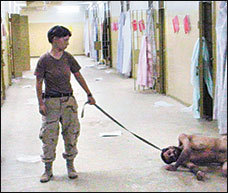
During the first year of "Operation Iraqi Liberation" the ultimate real life case example of the Stanford Prison Experiment unfolded in Abu Ghraib. The shocking photos showed a far darker scene unfold during the operation fo the prison there, but then again considering how far the original Stanford Experiment ran in a mere 6 days, who knows maybe they would have gone that far too over a long enough timeline.

So goes out crash course in common everyday Self-Deception & Brutality. Between the two can be accounted much of the insanity in the 'normal' human condition, as well as rationalizations justifying 'routine tyrannies'. I argue these are two very important places to look in terms of weeding out mankinds dark heart.
All of this dark matter in everyday human affairs, yet this has only been a scraping of the surface of mankinds 'dark passengers', and this has only been putting it mildly. There are so many other examples we could get into, and zoom in on, especially factoring in the entire history and scope of human subjugation and the like, endless potential chapters. And get to them 'all' we will, but there's a lot of other subjects this series is to cover so there inherently will be some jumping around between subjects from chapter to chapter...
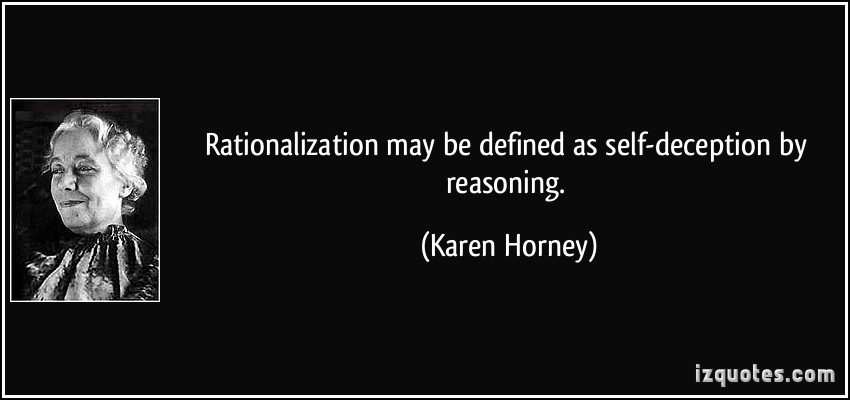
Believe it or not, that was a white guy. At the time I got into a big unexpected heated argument with my neighbor about that incident. I wasn't even sure of the exact criminality of the perp (it turns out he basically was running for being scared initially), it was the way they handled him that was my concern. My neighbor, not even having seen it, instantly supported the police actions (his wife works in law enforcement, and it is dangerous). I suppose the guy did deserve some serious consequences, but that level of atrocity was way beyond the mark. I killed our 'debate' with "okay, so he deserved 2 months in the hospital and then a year in jail afterwards, or ruptured testicles, 6 weeks in the hospital and 6 months in prison... how many broken ribs and then how many months in jail should they give him"? Neighbor was furious.

Transportation Security Administration
TSA agents are also accused of having mistreated passengers, and having sexually harassed passengers, having used invasive screening procedures, including touching the genitals, including those of children, removing nipple rings with pliers,[176] having searched passengers or their belongings for items other than weapons or explosives, and having stolen from passengers. The TSA fired 28 agents and suspended 15 others after an investigation determined they failed to scan checked baggage for explosives. ...A 2013 GAO report showed a 26% increase in misconduct among TSA employees between 2010 and 2012, from 2,691 cases to 3,408.[193] Another GAO report said that there is no evidence that the Screening of Passengers by Observation Techniques (SPOT) behavioral detection program, with an annual budget of hundreds of millions of dollars, is effective.
Airport Body Scanners Have Been Used to Rate (and Berate) Your Junk
Former TSA screener Rolando Negrin would probably beg to differ. While undergoing body scanner training at a Miami facility, his co-workers noticed on the screen that Negrin was packing a petite pecker. Naturally, Negrin's colleagues hounded him about this for months, withering his penis to an insecure husk and demonstrating the stalwart professionalism with which every airport patron is likely treated. Negrin, ill-equipped to dick-whip his assailants into contrition, cornered one of his co-workers in the airport parking lot, whipped out an extendable police baton, and proceeded to beat an apology out of his harasser. In doing so, he landed himself a stint in jail and guaranteed that any person confronting the probing eyes and hands of airport security would be examined in a dignified manner.
Or not. According to ex-TSA agent Jason Harrington (and every fiber of common sense in your exposed body), body scanners are much more effective for mercilessly ridiculing passengers from behind closed doors than they are for spotting terrorists. Plastic explosives were apparently indistinguishable from fat rolls, leaving screeners with little more to do than make a sport out of laughing at overweight passengers and guessing the sex of ambiguously shaped bodies passing through scans. And when they aren't laughing their asses off at man boobs and crotchular irregularities, screeners racially profile your genitals in the name of ... national security, or, as Harrington explained, "All the old, crass stereotypes about race and genitalia size thrived on our secure government radio channels." Which makes us feel markedly insecure. In our pants.
No discussion of job related atrocities would be complete without discussing the TSA, of course, and neither would the military profession.

During the first year of "Operation Iraqi Liberation" the ultimate real life case example of the Stanford Prison Experiment unfolded in Abu Ghraib. The shocking photos showed a far darker scene unfold during the operation fo the prison there, but then again considering how far the original Stanford Experiment ran in a mere 6 days, who knows maybe they would have gone that far too over a long enough timeline.

The Abu Ghraib Effect
The line between punishment and torture can be razor-thin—yet the entire world agreed that it was definitively crossed at Abu Ghraib. Or perhaps not. George W. Bush won a second term in office only months after the Abu Ghraib scandal was uncovered, and only the lowest-ranking U.S. soldiers involved in the scandal have been prosecuted. Where was the public outcry? Stephen Eisenman offers here an unsettling explanation that exposes our darkest inclinations in the face of all-too-human brutality.
Eisenman characterizes Americans’ willful dismissal of the images as “the Abu Ghraib effect,” rooted in the ways that the images of tortured Abu Ghraib prisoners tapped into a reactionary sentiment of imperialist self-justification and power. The complex elements in the images fit the “pathos formula,” he argues, an enduring artistic motif in which victims are depicted as taking pleasure in their own extreme pain. Meanwhile, the explicitly sexual nature of the Abu Ghraib tortures allowed Americans to rationalize the deeds away as voluntary pleasure acts by the prisoners—a delusional reaction, but, The Abu Ghraib Effect reveals, one with historical precedence. From Greek sculptures to Goya paintings, Eisenman deftly connects such works and their disturbing pathos motif to the Abu Ghraib images.
Skillfully weaving together visual theory, history, philosophy, and current events, Eisenman peels back the political obfuscation to probe the Abu Ghraib images themselves, contending that Americans can only begin to grapple with the ramifications of torture when the moral detachment of the “Abu Ghraib effect” breaks down and the familiar is revealed to be horribly unfamiliar.
So goes out crash course in common everyday Self-Deception & Brutality. Between the two can be accounted much of the insanity in the 'normal' human condition, as well as rationalizations justifying 'routine tyrannies'. I argue these are two very important places to look in terms of weeding out mankinds dark heart.
All of this dark matter in everyday human affairs, yet this has only been a scraping of the surface of mankinds 'dark passengers', and this has only been putting it mildly. There are so many other examples we could get into, and zoom in on, especially factoring in the entire history and scope of human subjugation and the like, endless potential chapters. And get to them 'all' we will, but there's a lot of other subjects this series is to cover so there inherently will be some jumping around between subjects from chapter to chapter...

edit on 28-10-2016 by IgnoranceIsntBlisss because: (no reason given)
Unlike most animals, humans have the capacity for rational thought. This is what has put us at the top of the food chain. It is this capacity that has
always drawn humanity back from the brink. Nurture compassion and reason, stop spreading fear and confusion.
Lots to digest here. Thanks for putting in the work.
Might I suggest a link to the previous chapters, or in this case the prologue?
Will make it easier to come back to later.
Either way, thanks.
I'm not proud to say that I see a lot of myself on some of this when I think to my past as actively managing a team at work. Thankfully I pretty much work alone now lol.
Might I suggest a link to the previous chapters, or in this case the prologue?
Will make it easier to come back to later.
Either way, thanks.
I'm not proud to say that I see a lot of myself on some of this when I think to my past as actively managing a team at work. Thankfully I pretty much work alone now lol.
a reply to: SteamyJeans
Yeah I meant to, but got all ansy to post, then needed a catnap.
There is a catch in management, on the one hand its too easy for too many to delve into petty power tripping (sadism), while on the other hand people tend to need to be bossed around in order to get anything done. Some even get off on it (masochism), whether they consciously acknowledge it or not. But that gets into power & obedience, which we will be getting to shortly, starting in "Politics as a Sadomasochistic Sport"....
Yeah I meant to, but got all ansy to post, then needed a catnap.
There is a catch in management, on the one hand its too easy for too many to delve into petty power tripping (sadism), while on the other hand people tend to need to be bossed around in order to get anything done. Some even get off on it (masochism), whether they consciously acknowledge it or not. But that gets into power & obedience, which we will be getting to shortly, starting in "Politics as a Sadomasochistic Sport"....
edit on
28-10-2016 by IgnoranceIsntBlisss because: (no reason given)
a reply to: IgnoranceIsntBlisss
SnF
But I think this guy is a bit oversexed and delusional because of it.
Its much simpler than this. By nature we block out the bad things, sometimes in extreme cases they can haunt us as flashbacks, but for the most part we hide them deep in our minds. Almost forgotten. This is a defense and copping method natural to us.
That and we are extremely complacent and at least slightly Narcissistic. So we simply don't care enough to make sure justice was done because it had no direct impact on our lives.
We assuse someone else will take care of it.
Nothing sexual, I'm sorry to the Freudians but not everything has to do with sex.
Of course for those who are so obsessed with sex they think everything has to do with sex, for them everything most certainly has to do with sex. Lol
SnF
But I think this guy is a bit oversexed and delusional because of it.
Eisenman characterizes Americans’ willful dismissal of the images as “the Abu Ghraib effect,” rooted in the ways that the images of tortured Abu Ghraib prisoners tapped into a reactionary sentiment of imperialist self-justification and power. The complex elements in the images fit the “pathos formula,” he argues, an enduring artistic motif in which victims are depicted as taking pleasure in their own extreme pain. Meanwhile, the explicitly sexual nature of the Abu Ghraib tortures allowed Americans to rationalize the deeds away as voluntary pleasure acts by the prisoners—a delusional reaction,
Its much simpler than this. By nature we block out the bad things, sometimes in extreme cases they can haunt us as flashbacks, but for the most part we hide them deep in our minds. Almost forgotten. This is a defense and copping method natural to us.
That and we are extremely complacent and at least slightly Narcissistic. So we simply don't care enough to make sure justice was done because it had no direct impact on our lives.
We assuse someone else will take care of it.
Nothing sexual, I'm sorry to the Freudians but not everything has to do with sex.
Of course for those who are so obsessed with sex they think everything has to do with sex, for them everything most certainly has to do with sex. Lol
edit on 28-10-2016 by Isurrender73 because: (no reason given)
a reply to: IgnoranceIsntBlisss
Have not read the entire post but thank you thank you. Excellent.
Your insight is appreciated and I can relate. Also have to look at my self ...did I ever do that. Think not but still important to look inside.
Have not read the entire post but thank you thank you. Excellent.
Your insight is appreciated and I can relate. Also have to look at my self ...did I ever do that. Think not but still important to look inside.
edit on 29-10-2016 by liveandlearn because: (no reason given)
This thread seems to ignore the aspect of human nature that separates us from all other species; the art of healing, of creating and rebuilding. For
the many that would look the other way when faced with danger, there are always those who run towards the smoke, who risk the flames in order to
preserve life.
I think that acknowleging one side of human nature while ignoring the other is painting a very incomplete sketch of what it means to be human.
I think that acknowleging one side of human nature while ignoring the other is painting a very incomplete sketch of what it means to be human.
a reply to: IgnoranceIsntBlisss
Right. I didn't actually think I was bringing any earth-shattering news to anyone's attention. I suppose my point (poorly made) is that, to me, the difference between us and the animal kingdom is not of degree, rather of kind (G.K. Chesterton's idea, not mine). While the animal kingdom shares many of the same traits with each other, and while we share certain traits with the animal kingdom, we are so vastly different from our co-inhabitants as to raise certain questions concerning our shared ancestry. I'd posit that the greatest difference lies in our creative powers, and our ability to heal and reconstruct whether it be our own bodies, (including medical and technical advancements ie artificial limbs) animals' or the environment.
The best way of nurturing our amazing abilities to heal and empower each other would be to actively practice kindness. As CS Lewis puts it, the kinder we are to another person, the more we like them.. conversely, the crueler we are, the more we hate (I found this to be a bit counter-intuitive, at least to me- I always thought the more we hate the crueler we were but to think that action precedes thought is quite interesting.)
Interesting thread nonetheless.
Right. I didn't actually think I was bringing any earth-shattering news to anyone's attention. I suppose my point (poorly made) is that, to me, the difference between us and the animal kingdom is not of degree, rather of kind (G.K. Chesterton's idea, not mine). While the animal kingdom shares many of the same traits with each other, and while we share certain traits with the animal kingdom, we are so vastly different from our co-inhabitants as to raise certain questions concerning our shared ancestry. I'd posit that the greatest difference lies in our creative powers, and our ability to heal and reconstruct whether it be our own bodies, (including medical and technical advancements ie artificial limbs) animals' or the environment.
The best way of nurturing our amazing abilities to heal and empower each other would be to actively practice kindness. As CS Lewis puts it, the kinder we are to another person, the more we like them.. conversely, the crueler we are, the more we hate (I found this to be a bit counter-intuitive, at least to me- I always thought the more we hate the crueler we were but to think that action precedes thought is quite interesting.)
Interesting thread nonetheless.
edit on 29-10-2016 by zosimov because: (no reason given)
originally posted by: zosimov
a reply to: IgnoranceIsntBlisss
As CS Lewis puts it, the kinder we are to another person, the more we like them.. conversely, the crueler we are, the more we hate (I found this to be a bit counter-intuitive, at least to me- I always thought the more we hate the crueler we were but to think that action precedes thought is quite interesting.)
Interesting thread nonetheless.
We have freewill. We can choose to be kind. Or we can choose to be cruel.
Most people are predominantly reactionary. But we don't have to be. It's a choice for those who are aware that its a choice.
we start to hate someone because of what they say and do, thats a rational way of directing emotion. when you become so self involved thinking your
better than others because of a political, racial, or religious self awareness and bring yourself to a fascist state of mind. you conflict with
yourself. because you cancel out your rational mind by practicing such thinking.
edit on 29-10-2016 by anotherside because: (no reason
given)
a reply to: anotherside
Sometimes we hate people we were taught to fear and hate. Such as racism, different religious beliefs and homophobia.
Our preconceived notions about someone can lead us to hate them, even if our preconceived notion is wrong.
These are times were hate meets freewill.
What you are talking about is the victim hating the criminal which is a normal reaction.
Sometimes we hate people we were taught to fear and hate. Such as racism, different religious beliefs and homophobia.
Our preconceived notions about someone can lead us to hate them, even if our preconceived notion is wrong.
These are times were hate meets freewill.
What you are talking about is the victim hating the criminal which is a normal reaction.
edit on 29-10-2016 by Isurrender73 because: (no
reason given)
Very interesting material OP. Compelling and for many I'm sure hits close to home.
It makes me wonder about my own mental illness(autism) and how it relates to my massive reluctance to participate in typical human hierarchy.
It makes me wonder about my own mental illness(autism) and how it relates to my massive reluctance to participate in typical human hierarchy.
new topics
-
This is why ALL illegals who live in the US must go
US Political Madness: 6 minutes ago -
UK Borders are NOT Secure!
Social Issues and Civil Unrest: 1 hours ago -
Former ‘GMA Producer’ Sues NPR-Legacy Media Exposed
Propaganda Mill: 3 hours ago -
New Footage - Randy Rhoads 1979 LIVE Guitar Solo Footage at the Whisky - Pro Shot
Music: 4 hours ago -
Happy Hanukkah…
General Chit Chat: 4 hours ago -
A Merry Christmas.
General Chit Chat: 11 hours ago
top topics
-
Former ‘GMA Producer’ Sues NPR-Legacy Media Exposed
Propaganda Mill: 3 hours ago, 8 flags -
A Merry Christmas.
General Chit Chat: 11 hours ago, 7 flags -
Happy Hanukkah…
General Chit Chat: 4 hours ago, 6 flags -
New Footage - Randy Rhoads 1979 LIVE Guitar Solo Footage at the Whisky - Pro Shot
Music: 4 hours ago, 4 flags -
UK Borders are NOT Secure!
Social Issues and Civil Unrest: 1 hours ago, 3 flags -
This is why ALL illegals who live in the US must go
US Political Madness: 6 minutes ago, 0 flags
active topics
-
Happy Hanukkah…
General Chit Chat • 13 • : LuciusDriftwood -
This is why ALL illegals who live in the US must go
US Political Madness • 0 • : fringeofthefringe -
Petition Calling for General Election at 564,016 and rising Fast
Political Issues • 171 • : Oldcarpy2 -
UK Borders are NOT Secure!
Social Issues and Civil Unrest • 5 • : gortex -
Plane Crash Today --Azerbaijanian E190 passenger jet
Mainstream News • 34 • : WeMustCare -
-@TH3WH17ERABB17- -Q- ---TIME TO SHOW THE WORLD--- -Part- --44--
Dissecting Disinformation • 3817 • : Thoughtful3 -
Trump says ownership of Greenland 'is an absolute necessity'
Other Current Events • 50 • : matafuchs -
Former ‘GMA Producer’ Sues NPR-Legacy Media Exposed
Propaganda Mill • 4 • : MuddyPaws2 -
Orange County Makes Shoplifting a Felony
Other Current Events • 27 • : Degradation33 -
JILL BIDEN Wants JOE to Punish Democrats Who Forced Him to Leave Office in Disgrace on 1.20.2025.
2024 Elections • 16 • : Guyfriday
18
